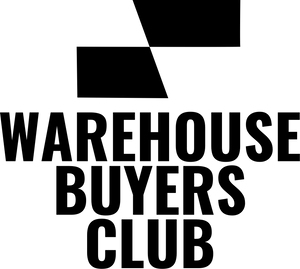𝐖𝐡𝐚𝐭 𝐭𝐨 𝐋𝐨𝐨𝐤 𝐟𝐨𝐫 𝐢𝐧 𝐚 𝐔𝐬𝐞𝐝 𝐅𝐨𝐫𝐤𝐥𝐢𝐟𝐭?
Purchasing a used forklift can be a smart and cost-effective decision for businesses looking to effectively use their warehouse space without breaking the bank. However, buying pre-owned equipment comes with its own set of challenges. Knowing what to look for in a used forklift is essential to ensure you’re investing in a reliable, efficient, and safe asset that aligns with your operational goals.
In this blog, we’ll discuss the critical factors to consider when selecting a used forklift, from checking the equipment's age and maintenance history to understanding load capacity requirements. With these insights, you can make a well-informed decision that will benefit your warehouse operations in the long run.

1. Age and Hours of Operation
One of the first aspects to evaluate is the age of the forklift and its hours of operation. Generally, the older the forklift and the more hours it has been used, the greater the likelihood of wear and tear.
- Check Hours Worked: Forklifts are often rated based on hours rather than years. A forklift used for light lifting may have a longer lifespan than one used in heavy-duty operations. Aim for a forklift with fewer hours to ensure longevity.
- Past Usage Type: Heavy-duty applications like construction or manufacturing can be harder on forklifts than lighter tasks like retail operations. Knowing where and how it was used will give you insight into its expected durability.
Did You Know? Forklifts used for more than 20,000 hours may require extensive repairs and maintenance, so always check the hour meter before purchasing.
2. Maintenance History
A well-maintained forklift will show consistent performance, even as a pre-owned machine. A full maintenance history is a valuable asset in understanding the condition of the equipment. Ask for maintenance records, service logs, and any repair documentation.
- Look for Regular Maintenance: A forklift that has been regularly maintained is likely to have fewer issues. Regular oil changes, hydraulic fluid checks, and battery maintenance are signs that the previous owner took care of the equipment.
- Check for Upgrades: Sometimes, upgrades like improved tires, LED lights, or safety features can enhance the functionality of a used forklift. These are bonuses that could save you money on retrofitting.
Did You Know? Every forklift manufacturer has a different preventative maintenance recommendation based on hours? Most intervals are between 250-500 run hours.

3. Load Capacity and Lifting Height
It’s essential to consider your warehouse’s specific requirements, including load capacity and lifting height, as forklifts come in various capacities to handle different loads.
- Evaluate Your Needs: Determine the heaviest load your forklift will need to lift and ensure that the equipment’s capacity is sufficient. Overloading a forklift not only causes damage but also poses a safety risk.
- Check Lifting Height Requirements: Forklifts are designed to lift to specific heights. If your warehouse has high shelving, ensure the forklift can reach the necessary height to avoid operational limitations.
Did You Know? Overloading a forklift by even a small percentage can significantly affect stability, which may lead to tipping, and endangering workers and goods.
4. Type of Power Source
Forklifts are typically powered by electricity, gas, or diesel. Each type has its benefits and limitations, so it’s important to know which is best for your environment.
- Electric Forklifts: Ideal for indoor use, as they’re quieter, require less maintenance, and produce no emissions. However, battery life and charging times need to be factored into your operational schedule.
- Gas or Diesel Forklifts: These are generally more powerful and suited for outdoor use. While they have more operational endurance, they are noisier, produce emissions, and require more maintenance.
Did You Know? Electric forklifts have less parts to maintain compared with gas or diesel or forklifts?
5. Tires and Wheels
Checking the condition and type of tires is another crucial step. The right tires can ensure safe and efficient operation.
- Tire Type: Forklifts usually have pneumatic or cushion tires. Cushion tires are more suited for smooth, indoor surfaces, while pneumatic tires are better for rough or outdoor terrain.
- Tread and Condition: Worn-out tires not only affect handling but can also lead to safety hazards. Check that the tires are in good shape and are appropriate for your working conditions.
Did You Know? Tires that show signs of cracking, balding, or uneven wear can indicate poor maintenance, so they should be inspected carefully.

6. Safety Features and Inspections
Safety should always be a priority when purchasing any kind of industrial equipment. A used forklift should have essential safety features and pass inspection requirements.
- Seat Belt and Overhead Guard: Ensure the seat belt works properly, and the overhead guard is intact for maximum operator safety.
- Functional Lights and Horn: Working lights and a horn are essential for visibility and signaling in warehouse environments. Make sure these features are operational.
- Inspection Certification: Ask if the forklift has passed recent safety inspections, and verify if it meets the safety standards required in your industry.
Did You Know? In the U.S., OSHA requires forklifts to be inspected daily or before each shift if used continuously.
Conclusion
Buying a used forklift is a practical choice for many warehouses, but it’s essential to take a thorough approach to ensure safety, functionality, and value. From checking the forklift’s age and maintenance history to evaluating safety features and load capacity, following these guidelines can help you make a wise investment.
Ready to Find the Right Used Forklift?
Warehouse Buyers Club is here to help you find a reliable forklift that meets your warehouse needs. Contact us today to discuss your requirements and explore our selection of pre-owned forklifts.
Contact Us
📞 Phone: 717-746-8846
📧 Email: Jeff@warehousebuyersclub.com


